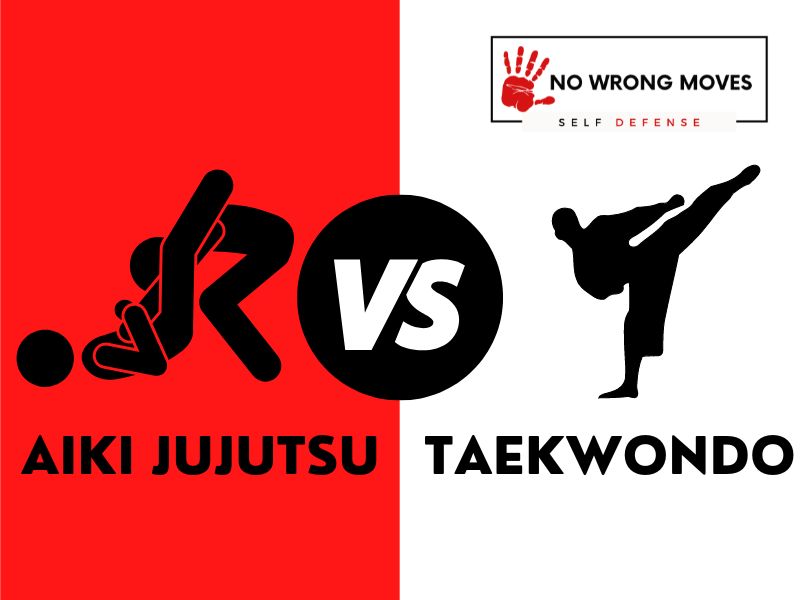
- What We Know About Aiki Jujutsu
- What We Know About Taekwondo
- Key Elements Of Aiki Jujutsu
- Key Elements Of Taekwondo
- Aiki Jujutsu Rankings & Levels
- Taekwondo Rankings & Levels
- Aiki Jujutsu Vs. Taekwondo Attire
- What A Typical Aiki Jujutsu Training Session Looks Like
- What A Typical Taekwondo Training Session Looks Like
- Aiki Jujutsu Movies
- Conclusion: Aiki Jujutsu Vs. Taekwondo
Today, we are going to end the long-standing debate of: Aiki Jujutsu Vs. Taekwondo! People (especially those online) go back on forth on which discipline is better.
Some say that Aiki Jujutsu is more fluid and instinctive, while others argue that Taekwondo is more powerful and straightforward. So which is it, and why?
Well...
The main difference between Aiki Jujutsu and Taekwondo, and the one you're most likely to immediately notice, is their emphasis on different techniques.
Aiki Jujutsu focuses on ground work and using an opponent's momentum against them, while Taekwondo emphasizes kicks and punches. Both styles are effective in self-defense, but the techniques used will differ depending on the situation.
Aiki Jujutsu is a Japanese martial art that dates back to the 16th century. It was created as a way to defend against armed opponents, and focuses on using an opponent's strength and momentum against them.
Its goal is to control or disable an opponent without causing serious injury. Aiki Jujutsu practitioners use a variety of techniques, including joint locks, throws, and striking.
Taekwondo is a Korean martial art that emerged in the 1940s. It combines elements of Karate and Chinese Kung Fu, and emphasizes kicks and punches. Taekwondo practitioners train to be able to deliver powerful kicks and strikes, with the goal of disabling an opponent.
Unlike Aiki Jujutsu, Taekwondo does not focus on joint locks or throws, but instead relies on kicks and punches to get the job done.
Both Aiki Jujutsu and Taekwondo are effective in self-defense, but the techniques used will differ depending on the situation.
If someone is trying to attack you with fists or kicks, then Taekwondo will be more effective. But if someone is trying to grab you or throw you to the ground, then Aiki Jujutsu would be the better choice for you.
What We Know About Aiki Jujutsu
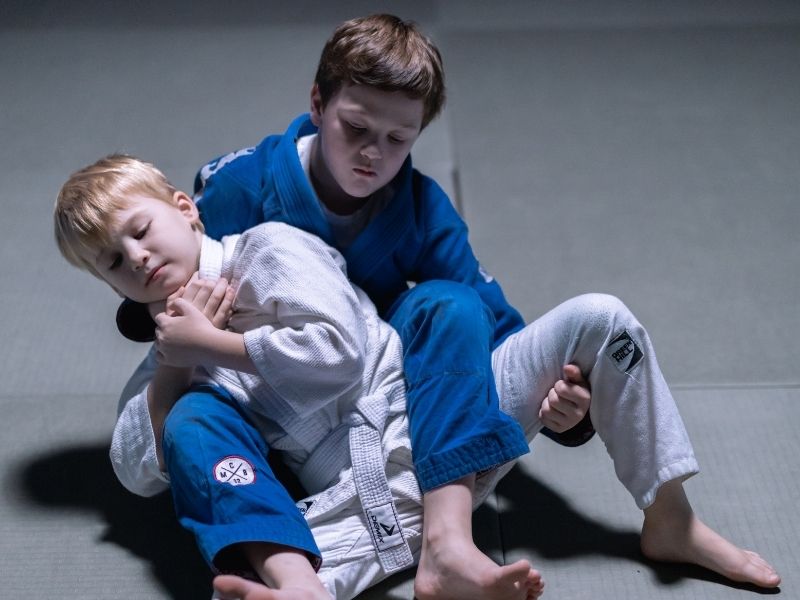
Aiki Jujutsu utilizes harmonizing an opponent's energy with your own internal energy in order to redirect it according to your needs. This is done by blending with the force instead of colliding with it, which would stop it in its tracks.
A practitioner of Aiki Jujutsu uses the striking and evasive techniques of Kempo-Jutsu to position their body close to their opponent before following with linear, diagonal or circular movements to redirect the opponent's energy.
The throwing techniques of Aiki Jujutsu are almost completely dependent upon the Atemi of Kempo-Jutsu. In some cases, with masterful skill, the practitioner can apply Aiki Jujutsu throwing techniques by blending with their opponent's energy.
In most cases, applying an appropriate Aiki Jujutsu throwing technique will disrupt the opponent's balance and send them flying.
The history of Aiki Jujutsu can be traced back to the Shinmei-ryu school of swordsmanship founded by Takenouchi Hisamori in the early 1600s. One of Hisamori's students, Takeda Sokaku, is credited with developing Aiki Jujutsu from the techniques he learned from Hisamori.
Sokaku passed on his knowledge to his son, Takeda Tokimune, who continued to teach and develop the art until his death in 1943.
Morihei Ueshiba continued to develop the art, creating Aikido, a modernized version of Aiki Jujutsu.
Aiki Jujutsu can still be used for self-defense or as a form of physical and mental exercise. It teaches control over one's own body and mind as well as efficiently using an opponent's energy against them.
What We Know About Taekwondo
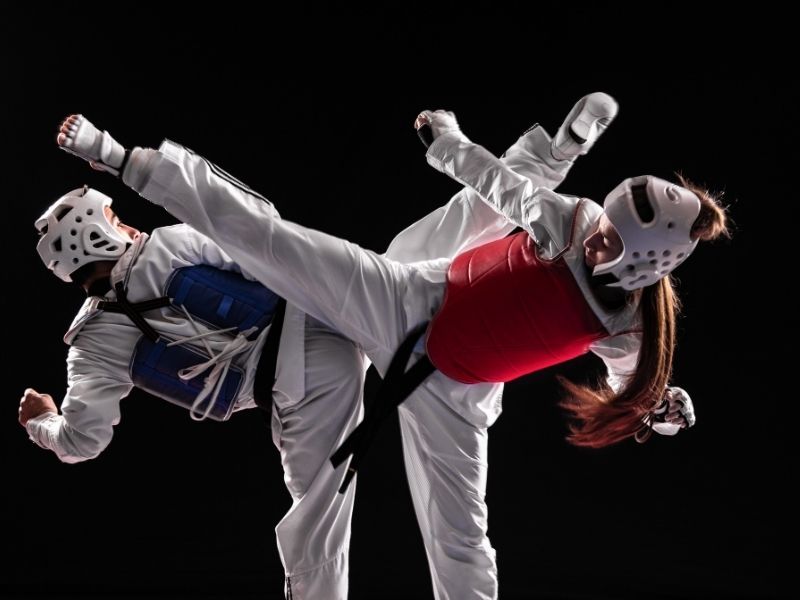
Taekwondo is a Korean martial art that emphasizes kicking and punching techniques. It is one of the most popular martial arts in the world, with millions of practitioners worldwide.
Taekwondo is often practiced as a sport, but it can also be used for self-defense. The word “taekwondo” literally means “the way of the foot and fist.”
Taekwondo is characterized by its fast and powerful kicks. Although it's a fairly recent martial art, it is believed to have roots in the ancient tribes of Korea, who used it for hunting and combat.
Taekwondo was formalized as a discipline in the 1950s, and it has since spread to many other countries.
There are four main styles of Taekwondo: Traditional, World Taekwondo, ITF, and ATA style. Taekwondo competitions are governed by the World Taekwondo Federation (WTF), which sets the rules for sparring and other aspects of the sport.
Taekwondo training typically includes a combination of physical conditioning, technique drills, and sparring.
Students usually progress through a series of colored belts as they learn and master new techniques. The black belt is the highest rank in taekwondo, and achieving this rank requires dedication and hard work.
Whether you’re interested in taekwondo for sport, self-defense, or simply as a way to stay fit, this martial art can be an enjoyable and rewarding experience. With its emphasis on kicking techniques, taekwondo is unique among martial arts, and its popularity continues to grow around the world.
Of course, this is only a brief history and understanding of Aiki Jujutsu and Taekwondo, but if you want to go deeper into either art, be sure to check out the following posts:
Now, back to the comparison...
Let's look at the origins of the respective disciplines and then compare the key elements of their practices. You will be able to understand some of their similarities and differences a bit better afterward.
| Aiki Jujutsu | Taekwondo | |
| Origins | Japanese | Korean |
Key Elements Of Aiki Jujutsu
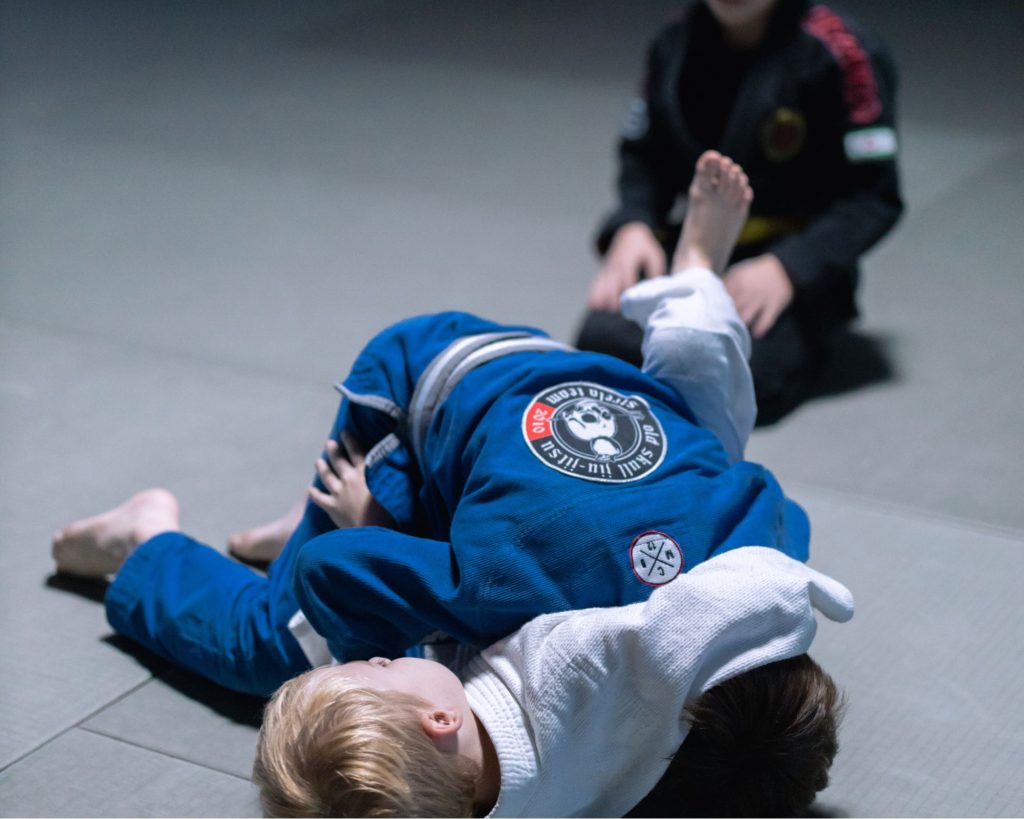
1. Use of leverage and balance
Aiki Jujutsu emphasizes the use of leverage and balance to overcome an attacker's strength. By using the attacker's momentum against them, a smaller person can defend themselves against a larger opponent.
2. Use of body movement and position
A practitioner of Aiki Jujutsu is trained to move in a way that maximizes their body's natural power, which includes proper posture, footwork, and positioning. Body movement is also used to evade and redirect an attacker's strikes.
3. Use of joint locks and throws
Joint locks and throws are key techniques in Aiki Jujutsu. Joint locks are used to control an attacker's joints, while throws are used to throw an attacker off-balance and immobilize them.
4. Blending with the motion of the attacker
Rather than resisting an attacker's force head-on, Aiki Jujutsu practitioners are trained to blend with the attacker's energy and redirect it in a way that neutralizes their attack.
5. Use of breath control
Breath control is important in Aiki Jujutsu, as it helps to regulate the practitioner's physical and mental state during a confrontation. By controlling their breath, the practitioner can maintain focus and remain calm under pressure.
6. Mental focus and calmness in the face of adversity
In addition to physical techniques, Aiki Jujutsu emphasizes mental training to cultivate calmness and focus in the face of adversity. This mental discipline allows the practitioner to remain calm and in control during a confrontation.
7. Using the attackers own energy against them
By using an attacker's own energy against them, Aiki Jujutsu practitioners are able to defend themselves while minimizing the risk of injury to themselves and the attacker.
Key Elements Of Taekwondo
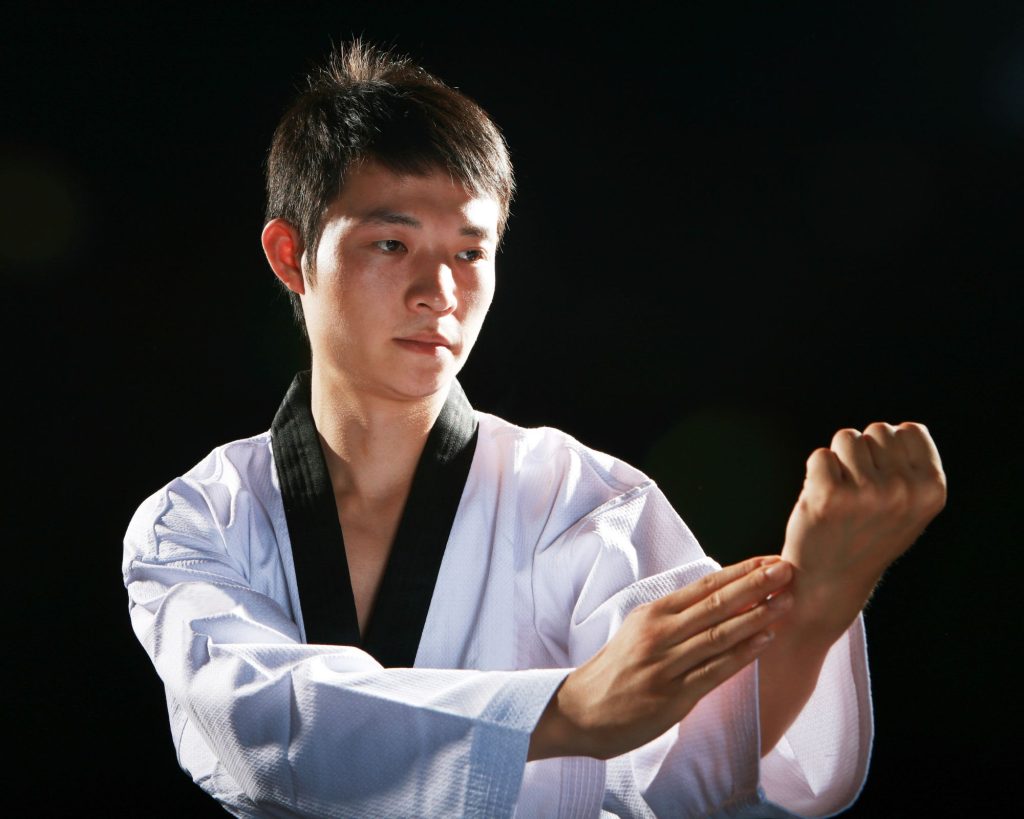
Taekwondo is a martial art that emphasizes speed, agility, and strength. Like I mentioned, the art is rooted in Korea and has become popular worldwide for its dynamic techniques and graceful movements.
In Taekwondo, there are three main stances: the front stance, back stance, and side stance. Each stance has a unique purpose and provides a different level of stability and power.
Punching and kicking techniques are the bread and butter of Taekwondo, and they're used for both defense and attack. Blocks are an essential component of Taekwondo and are used to stop an opponent's attack by deflecting or absorbing the impact.
Forms, also known as patterns, are a series of moves that are regularly practiced to enhance technique, timing, and stamina. Each of these will take a lot of dedicated study, but they're all elements that are crucial to learn for anyone eager to master this discipline.
Another thing I think is important to look at is the different rankings and levels in each art. If you are looking to take up either Aiki Jujutsu or Taekwondo, whether as a hobbyist or to compete, you need to understand the different levels of proficiency and what is required for testing and ranking.
Aiki Jujutsu Rankings & Levels
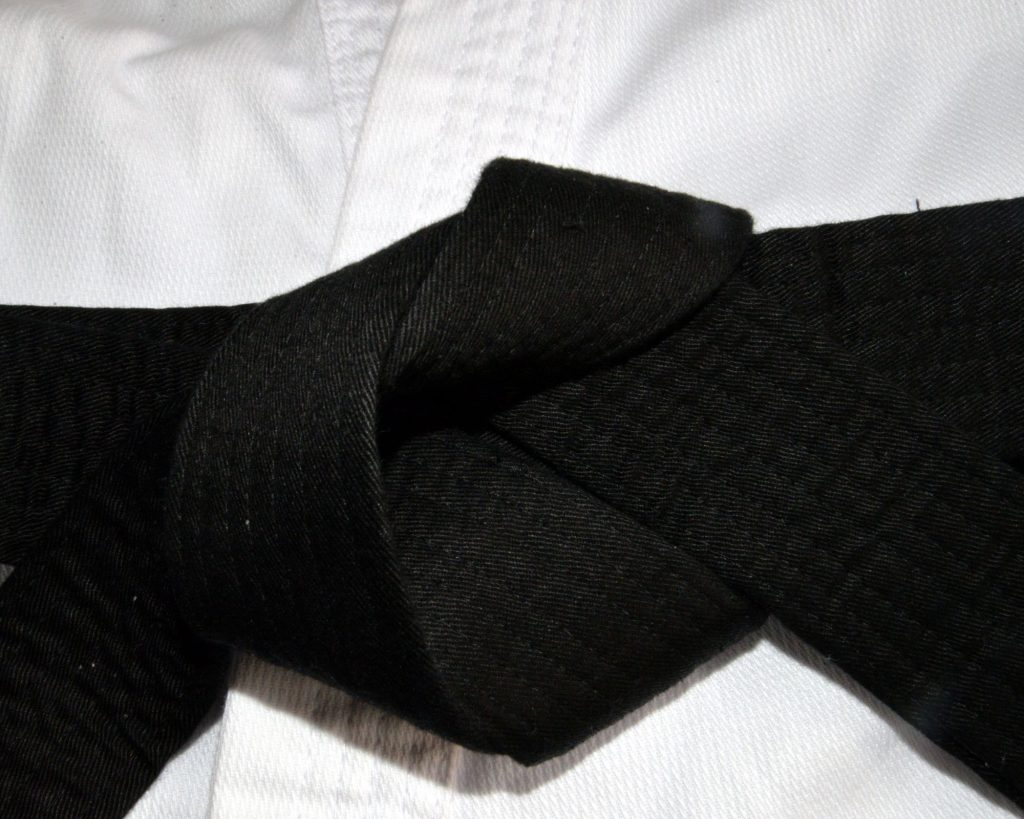
There are three levels in Aiki Jujutsu: beginner, intermediate, and advanced.
Beginner level is for students who are new to the art and are still learning the basics. At this level, students learn how to defend themselves against basic attacks and how to execute basic moves.
Intermediate level is for students who have mastered the basics and are now learning more advanced techniques. At this level, students learn how to defend themselves against more advanced attacks and how to execute more complex moves.
Advanced level is for students who have mastered the intermediate level and are now learning the most advanced techniques. At this level, students learn how to defend themselves against the most advanced attacks and how to execute the most complex moves.
Taekwondo Rankings & Levels
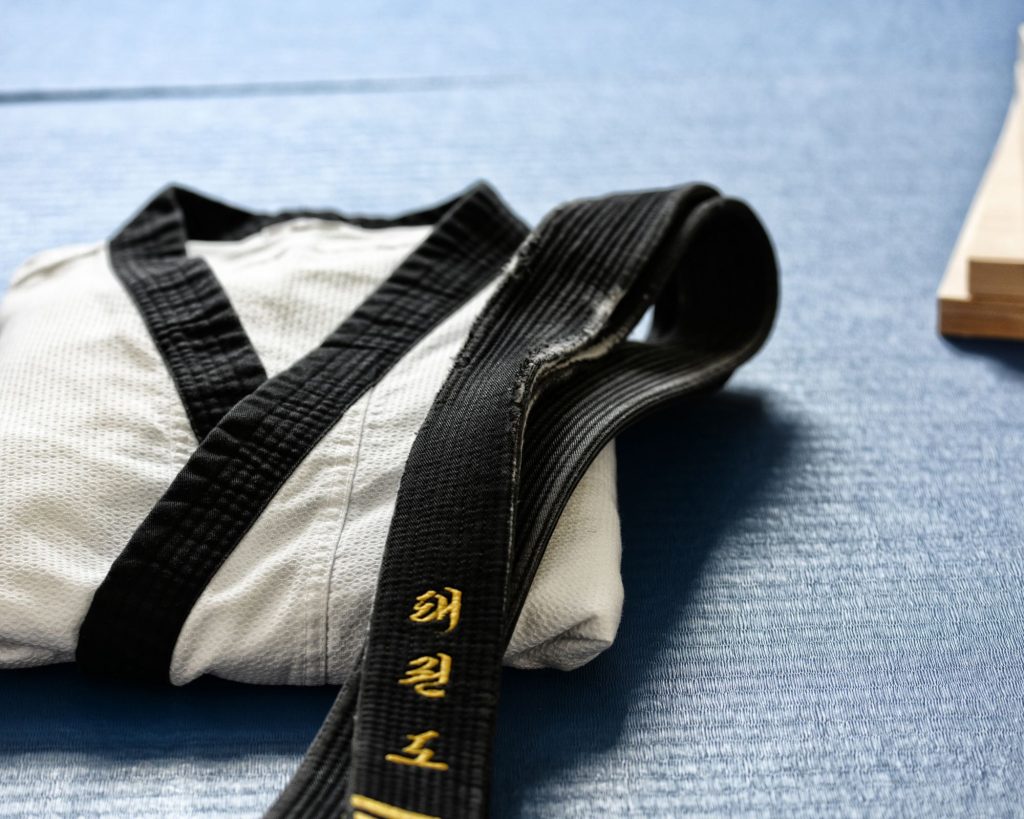
The rank system in Taekwondo is fairly complex, with 10 ranks ranging from 10th dan (white belt) to 1st dan (black belt). There are also a number of higher ranks called "master" ranks which are not awarded by most organisations.
Promotion between the ranks is usually based on a combination of time served and ability, with black belts often required to pass exams in order to be promoted to the next rank.
In some organisations, however, a black belt can be promoted straight to a master rank without having to go through all the lower ranks.
There are two main Taekwondo organisations--WT and ITF--and they have different standards when it comes to belts.
The WT organisation has 11 ranks, where belt colors are: white (11th dan), yellow, orange, green, purple, blue, blue and black, brown, brown and black, red, red and black, and black (1st dan).
In the ITF organisation, there are only 10 ranks, with the same belt colors as in the WT organisation. The difference is that the ITF organisation doesn't have a rank of brown and black – instead there is a rank of "red belt".
So overall there are 21 different rank levels in Taekwondo: 11 in the WT organisation and 10 in the ITF organisation.
Aiki Jujutsu Vs. Taekwondo Attire
This section simply compares the clothing and uniforms that practitioners wear in combat.
Aiki Jujutsu Attire:
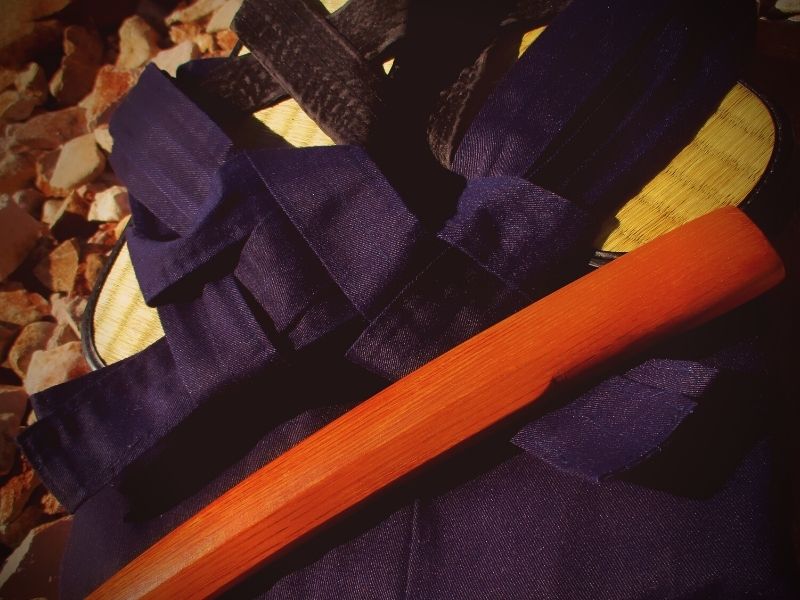
In terms of attire, Aiki Jujutsu practitioners typically wear a traditional dogi and hakama. This allows for better gripping and movement during techniques.
Taekwondo Attire:
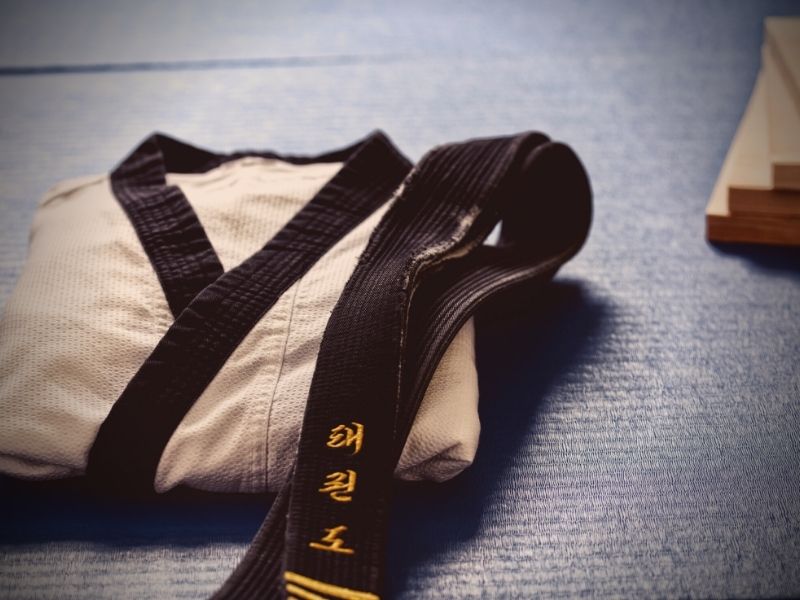
The traditional uniform for Taekwondo practitioners is a dobok. The dobok is white and consists of a jacket and pants. Most Taekwondo schools also require the use of Taegeukgi (Korean flag) belt, though there are some who do not.
In addition to the regular uniform, many Taekwondo schools also require the use of a head protector, chest protector, and padded gloves during practice.
What A Typical Aiki Jujutsu Training Session Looks Like
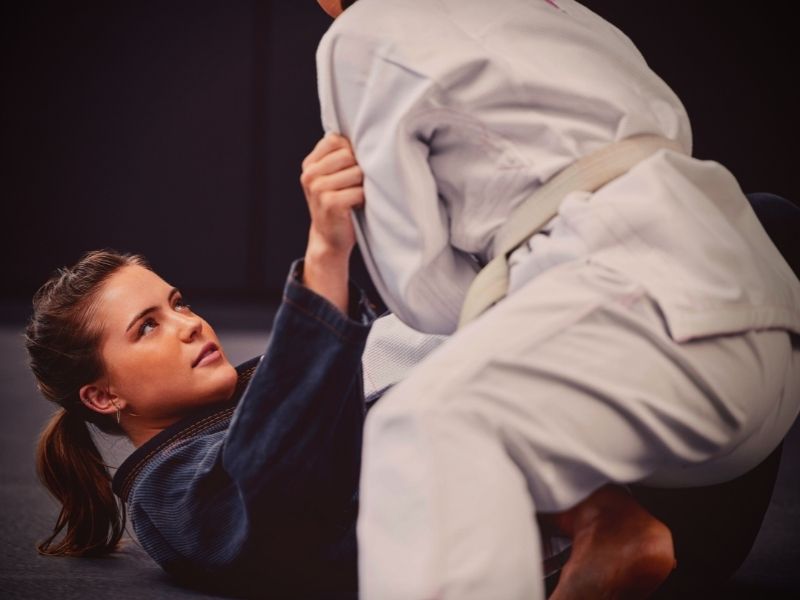
A typical Aiki Jujutsu practice session may start with a few minutes of warm-up exercises, such as joint rotations and light stretches. This is followed by practicing techniques, which may include throws, locks, and pins. The session usually ends with some relaxation exercises and a cool-down.
One of the most commonly used techniques in Aiki Jujutsu is the wristlock. This involves controlling an opponent's wrist and using their own momentum to throw them off balance.
In addition to physical technique, Aiki Jujutsu also emphasizes mental and spiritual development. This includes cultivating a strong mind-body connection and developing qualities such as patience and awareness.
What A Typical Taekwondo Training Session Looks Like
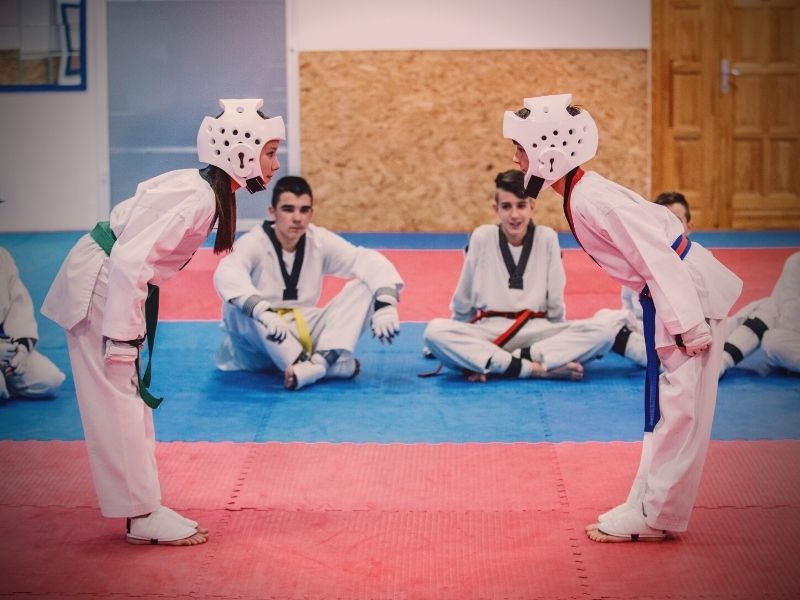
A typical Taekwondo practice session begins with a warm-up that includes stretching and light calisthenics, followed by a series of kicks and punches. The focus then turns to practicing techniques on a heavy bag or sparring with a partner.
The session ends with cooling down and review. Throughout the session, practitioners maintain a spirit of discipline and respect. Taekwondo is an excellent way to improve physical fitness, flexibility, and coordination, as well as an effective form of self-defense.
As such, it is practiced by people of all ages and abilities--as it should be. Whether you are looking to get in shape or learn how to defend yourself, Taekwondo is an excellent choice.
If the last few sections have been a bit full-on or a bit too technical, you will like this next section! Why? Because who doesn't love a good martial arts flick?
Both Aiki Jujutsu and Taekwondo have been featured in a number of films and TV shows, so if you want to learn more about them, then entertain yourself with the following 👊
Aiki Jujutsu Movies
These are some of the top movies and shows with Aiki Jujutsu in them:
- The Bourne Identity (2002)
- Kill Bill: Volume 1 (2003)
- Ong Bak (2003)
- Daredevil (TV series, 2015-2018)
- The Wolverine (2013)
- Arrow (TV series, 2012-2020)
- John Wick (2014)
- 13 Assassins (2010)
- The Raid (2011)
And some movies that have Taekwondo in them that you may not even have noticed…
- The Karate Kid (1984)
- The Matrix (1999)
- Crouching Tiger, Hidden Dragon (2000)
- Captain America: The Winter Soldier (2014)
- Kung Fu Panda (2008)
Both of these martial arts have been used in countless action movies and TV shows, often providing dynamic fight scenes and impressive stunts.
Conclusion: Aiki Jujutsu Vs. Taekwondo
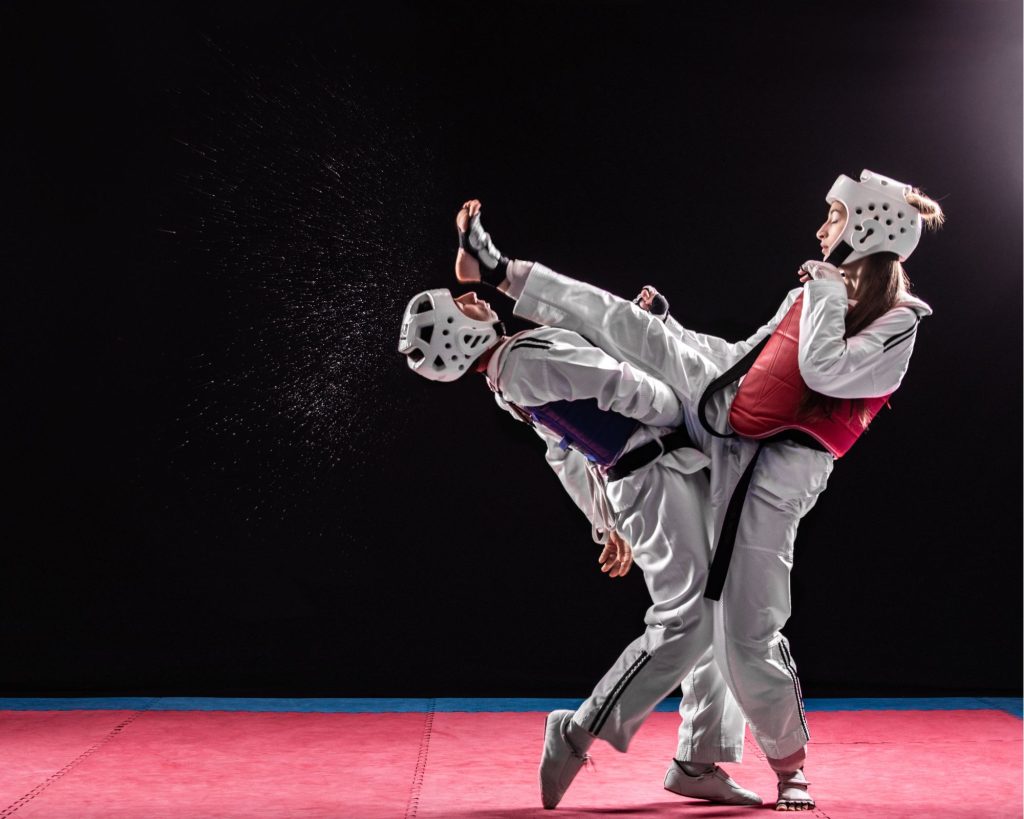
I hope you now have a deeper understanding of Aiki Jujutsu and Taekwondo. In all truth, it is not about which discipline is "better" as they each have their pros and cons.
If you do plan on starting classes for either, please check out my other related posts, as I have tried my best to answer all the FAQs related to the art.
Feel free to share this post and any graphics you like, and of course, if you have any questions or thoughts, drop them below or shoot me an email, and I will be happy to assist 🙂
That's about it for Aiki Jujutsu today. Check out its sibling sport, Jujutsu, here!
[author-box-jpx-fitness]
